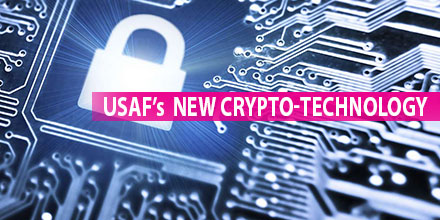Mini Crypto Chip Developed by USAF to Secure Communications, Data
 The use of Small Unmanned Aircraft Systems (sUAS) continues to expand into various industries. And, with that expansion comes growing awareness about the need for secure communications.
The use of Small Unmanned Aircraft Systems (sUAS) continues to expand into various industries. And, with that expansion comes growing awareness about the need for secure communications.
Of course, for the military, security is nothing new.
In a world where data is everything, protecting secret data from malicious hackers is vital.
Mini Crypto chip
Recently, the US Air Force (USAF) announced the development of a chip to secure communications and data between systems. One such example? For example, such a chip could secure communications between an unmanned aerial vehicle and an explosive ordnance disposal robot.
Described as a self-contained encryption engine, the new Mini Crypto chip is capable of generating its own session-based ‘key’.
About the size of a cracker, the chip is small and lightweight by design. At 400 milliwatts, its power requirement is roughly the same as a hearing aid. As such, it can install on equipment carried by one-person parties operating as scouts and forward air controllers.
The chip’s use includes joint and coalition environments, providing tailored access to data. Mini-crypto can also segregate data on a need-to-know basis
“We think the Mini Crypto chip will really help forward-deployed warfighters secure sensors, or communications devices, in areas where risk of interception is high, and still protect sensitive data without burdening folks on the front lines with extra equipment or steps to safeguard the encryption device,” said Air Force Life Cycle Management Center, Cryptologic and Cyber System Division, Mini Crypto programme manager Heidi Beason.
How it works
Mini Crypto works by establishing a key between sender and receiver. Once encrypted, the chip requires the exact key to read it. Mini Crypto’s unique key management system protects up to secret data and meets NSA encryption standards.
By the time a message is readable by an adversary, it is no longer useful information, the USAF stated.
“Communications devices all have a processor, where a message is formatted for transmission,” said Mini Crypto deputy programme manager Christopher Edsall. “Its key management system protects secret data and meets the National Security Agency standards.”
“In the case of a computer, it’s the central processing unit. Mini Crypto is located after the processing center but before the transmission center, which is usually a radio. Another Mini Crypto chip is installed at the receiver end after the receiving antennae, but before the CPU. The second Mini Crypto chip decrypts the received message as it comes through the radio where the unencrypted message is processed, and then it is displayed or heard.”
The chip’s ability to operate by consuming 400 milliwatts of power makes it suitable for installation on equipment carried by one-person parties operating as scouts and forward air controllers.

